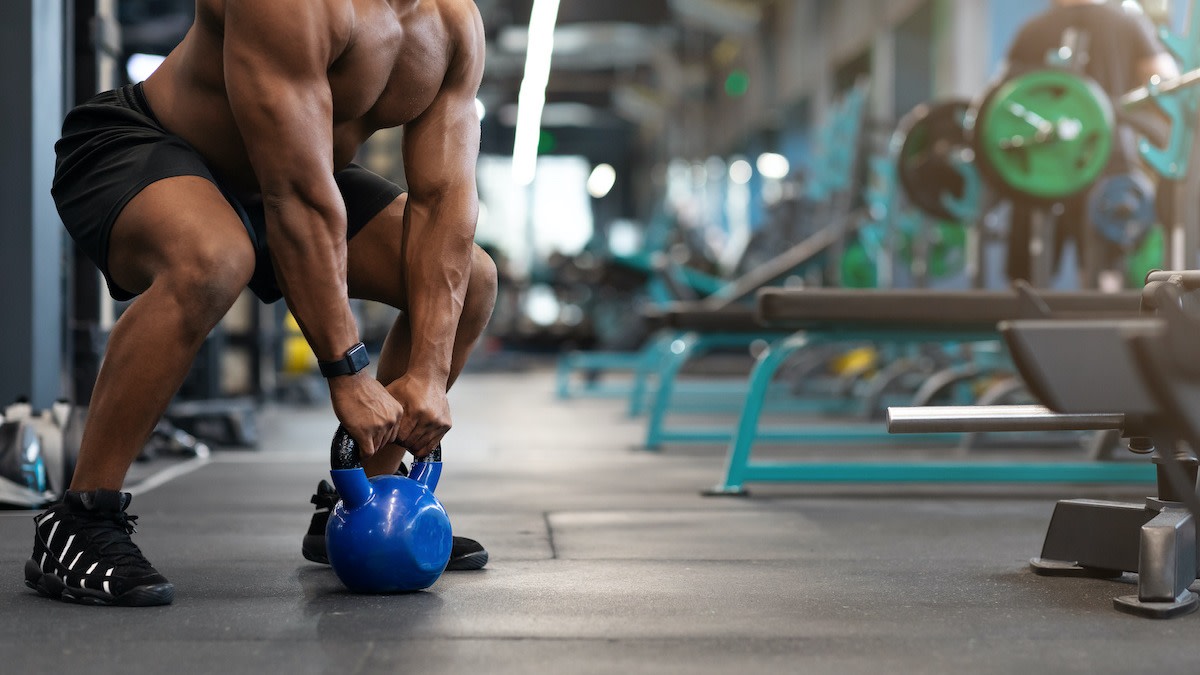Kettlebell Deadlift Guide: How to Master the Kettlebell Deadlift
Written by MasterClass
Last updated: Sep 17, 2021 • 4 min read
If you’re looking for a new workout routine, kettlebell deadlifts are a great way to build muscle.
Learn From the Best
What Is the Kettlebell Deadlift?
The kettlebell deadlift is a strength training exercise that uses a free weight called a kettlebell, a cast iron or cast steel ball with a handle on the top. This deadlifting variation works muscles in both your upper body and lower body. With proper form, the kettlebell deadlift is a great way for beginners to work their way up to heavier weights.
Kettlebell Deadlift vs. Deadlift: What’s the Difference?
The kettlebell deadlift and conventional barbell deadlift activate many of the same muscles, including the quads and posterior chain, a group of muscles in your lower back that includes the hamstrings, glutes, and calves. However, there are a few key differences.
- Grip: While you can perform the conventional deadlift with different grip techniques, including the underhand grip and mixed grip, the kettlebell deadlift typically uses an overhand grip with your palms facing towards your body. Kettlebell training exercises are a great way to increase grip strength.
- Lifting style: Both deadlift variations require a solid hip-hinge pattern, but there is a difference in the lifting style. Unlike the conventional deadlift, for which you place your hands outside of your knees, the kettlebell deadlift requires you to place your hands between your knees. This motion activates your adductors, a group of muscles in your inner thigh.
- Lighter weight: If you’re worried about lifting heavy deadlifts with a barbell, try starting with kettlebells, which are typically a lighter load. Kettlebells are also versatile weights to add to other exercises like squats.
How to Do a Kettlebell Deadlift
For the kettlebell deadlift, begin by using a weight that you can control for 2–3 sets of 6–10 repetitions. Choose a weight that allows you to maintain good technique throughout all sets and repetitions
- 1. Begin standing with the kettlebell on the ground in front of you. The kettlebell handle should be in line with the middle of your feet, facing forward so both hands are able to grip the outsides of the kettlebell handle. In the starting position, your posture should be tall with your feet shoulder- to hip-width apart and a slight bend in your knees. Your shoulders should be directly over your hips with a neutral head and neck position. Your chin should remain tucked throughout the movement, as if you were holding an egg under your chin. The weight on your feet should be evenly distributed along each entire foot. Grip the floor with your feet to create a stable foot position. Your arms should remain long by your sides with a slight bend in your elbows.
- 2. Pre-tension your shoulders, hips, and core with good inhale and exhale. Hinge from your hips and begin to bend your knees to lower your body toward the kettlebell.
- 3. Grab the kettlebell hand with two hands, and engage your lats by rotating your arms until the inner elbows face forward. Your chest should be higher than your hips, and your shoulders should be higher than your chest. Your shins should be in an upright position. All repetitions should begin from this position.
- 4. While maintaining a neutral spine position, keep the kettlebell in line with your lower legs, and start your upward movement by pushing your feet through the floor.
- 5. As you begin to stand, squeeze your glutes and allow your hips to travel forward. Imagine that your pelvis is a bucket filled with water and you’re attempting not to spill water out of the front, back, or sides of the bucket.
- 6. Keep your arms long, and finish the movement by squeezing your glutes while maintaining a neutral spine. At the end of each repetition, your shoulders should finish directly over the hips.
- 7. While keeping the kettlebell close to your body, maintain a neutral spine, and begin the downward movement by hinging from your hips, allowing your hips and knees to bend in order to lower the kettlebell back toward the floor. As you lower the kettlebell, your chest should be higher than your hips, and your shoulders should be higher than your chest. Your shins should be in an upright position.
- 8. Once the kettlebell reaches the floor, the repetition is complete.
How to Work out Safely and Avoid Injury
If you have a previous or pre-existing health condition, consult your physician before beginning an exercise program. Proper exercise technique is essential to ensure the safety and effectiveness of an exercise program, but you may need to modify each exercise to attain optimal results based on your individual needs. Always select a weight that allows you to have full control of your body throughout the movement. When performing any exercise, pay close attention to your body, and stop immediately if you note pain or discomfort.
In order to see continual progress and build body strength, incorporate proper warm-ups, rest, and nutrition into your exercise program. Your results will ultimately be based on your ability to adequately recover from your workouts. Rest for 24 to 48 hours before training the same muscle groups to allow sufficient recovery.
Want to Dive Deeper Into Your Wellness Journey?
Throw on some athleisure, fire up a MasterClass Annual Membership, and get ready to sweat it out with exclusive instructional videos from Nike Master Trainer and GQ fitness specialist Joe Holder. Want to improve your cardiovascular endurance? Give Joe’s HIIT workout a go. Trying to get a little swole? He’s got a strength training workout for that. From fitness tips to nutrition hacks, Joe will have you feeling healthier in no time.
